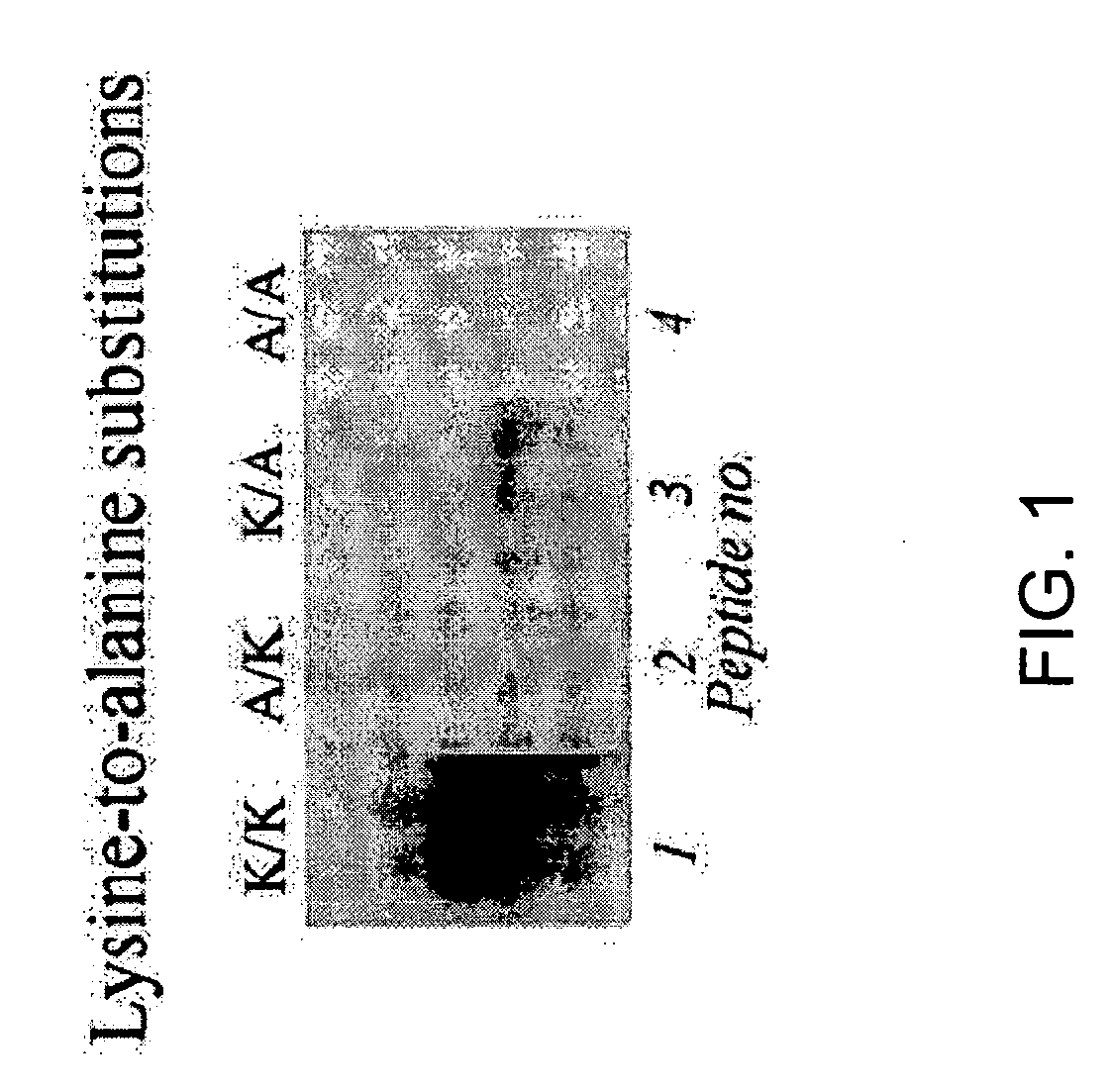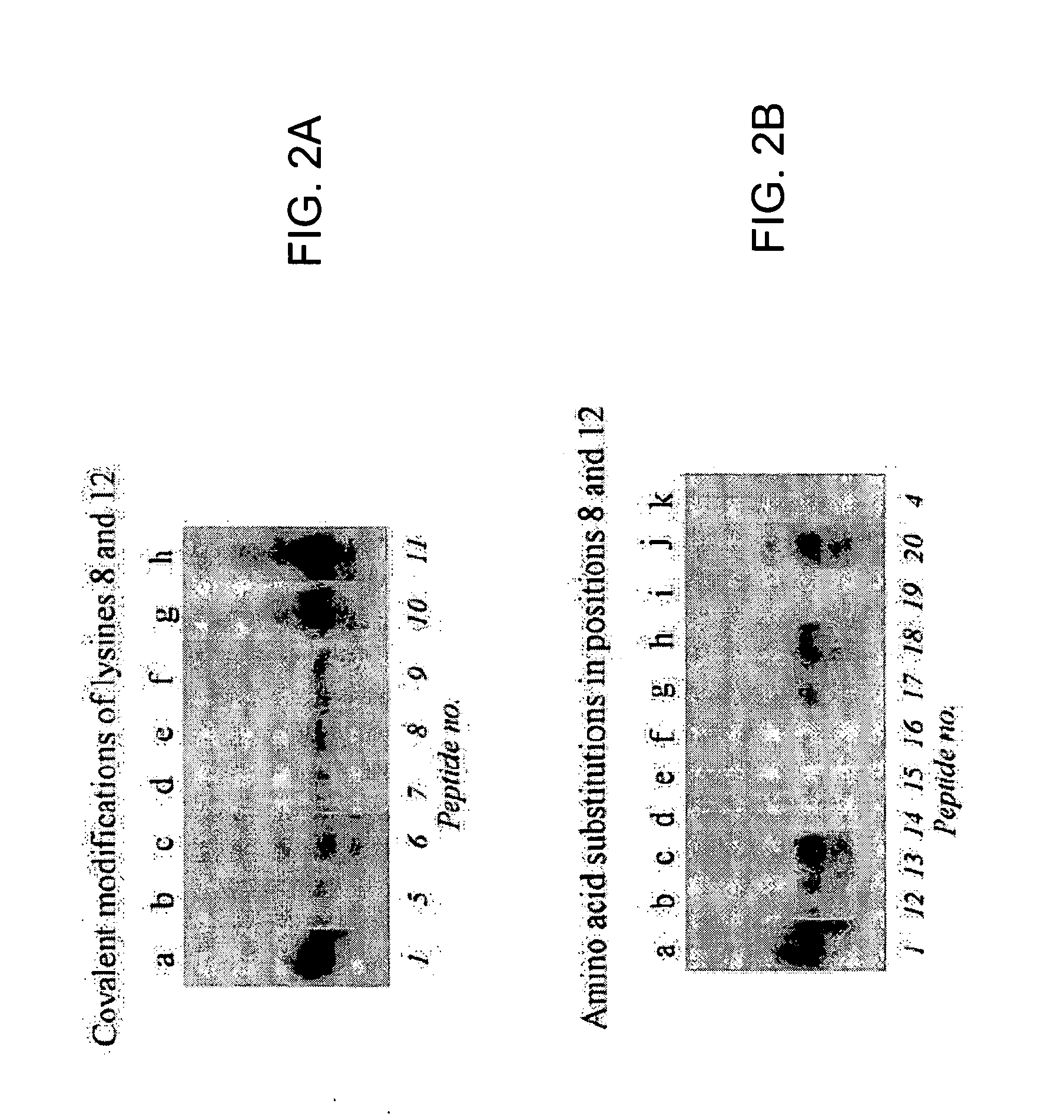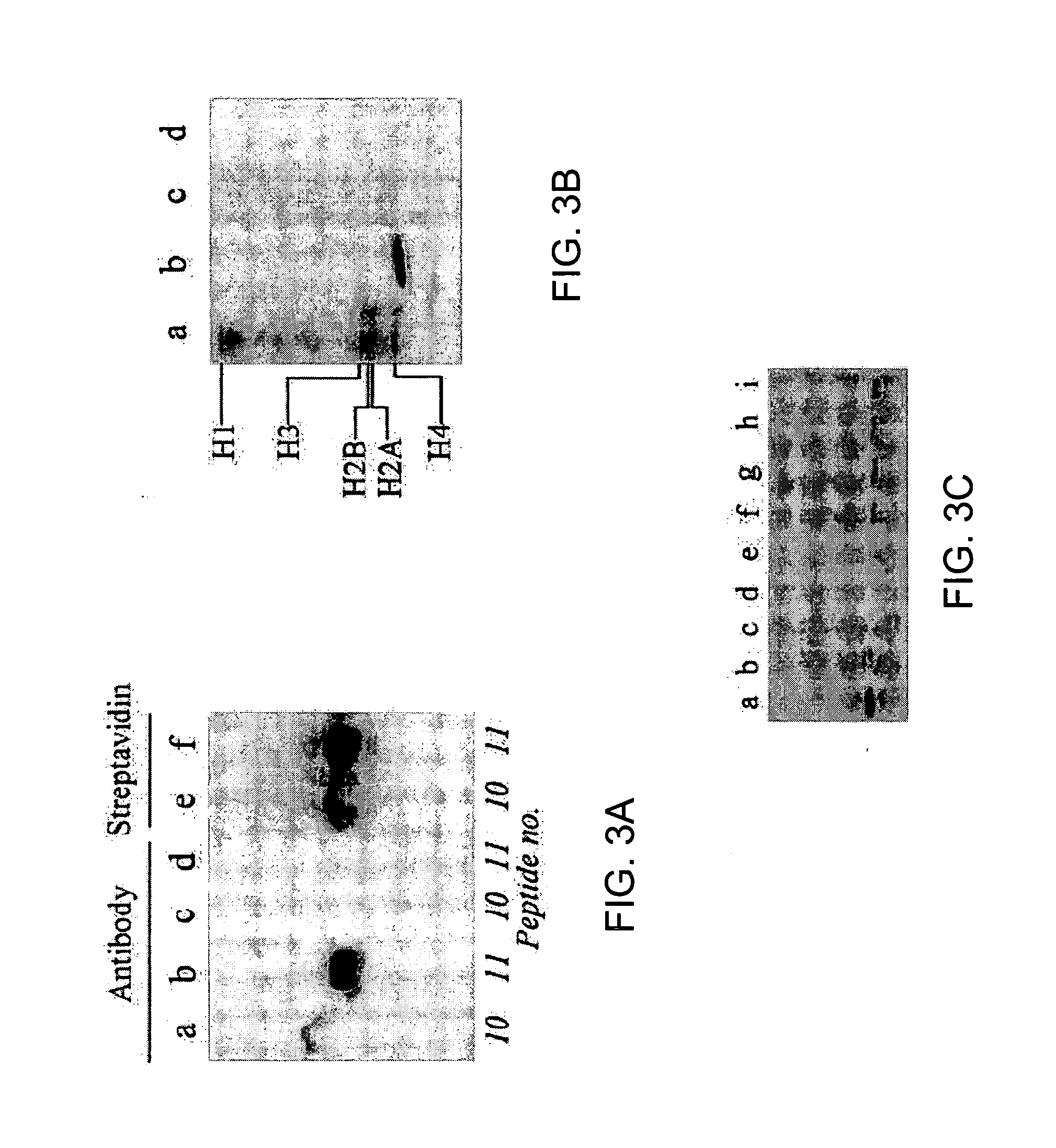Antibodies against biotinylated histones and related proteins and assays related thereto
a technology of biotinylation and histones, which is applied in the field of identification of biotinylation sites in histones, can solve the problems of inability of mutated biotinidase lack of understanding of histone biotinylation, and inability to catalyze histone biotinylation, so as to improve the biotinylation efficiency and enhance the biotinylation effect of histone biotinylation efficiency
- Summary
- Abstract
- Description
- Claims
- Application Information
AI Technical Summary
Benefits of technology
Problems solved by technology
Method used
Image
Examples
example 1
[0125] The following example demonstrates the identification of residues that are biotinylated in histone H4, antibodies that bind to such sites, and shows that acetylation and methylation of histone H4 regulate biotinylation in histone H4.
Materials And Methods
[0126] Peptide Synthesis
[0127] Previous studies have suggested that lysine residues in histone H4 are likely targets for biotinylation (Zempleni and Mock, 1999). Here, synthetic peptides spanning fragments of human histone H4 (GenBank accession number NM—175054; amino acid sequence represented herein by SEQ ID NO:6) were used to identify lysines that are targets for biotinylation. Peptides were synthesized using N-fluoren-9-ylmethoxycarbonyl (Fmoc) chemistry by a standard solid-phase method (Fields, 1998). One-letter annotation is used for denoting amino acids throughout this example (Garrett and Grisham, 1995). All solvents were purchased from EM Science (Gibbstown, N.J.) unless noted otherwise. L-isomers of Fmoc-amino ac...
example 2
[0160] The following example demonstrates the identification of residues that are biotinylated in histone H3 and antibodies that bind to such sites, and further demonstrates crosstalk between biotinylation of histones and other known modifications of histones.
Materials and Methods
[0161] Peptide Synthesis
[0162] Synthetic peptides were used as substrates for biotinidase to identify biotinylation sites in histone H3; the amino acid sequences in these peptides were based on human histone H3 (GenBank accession number NP—066403; amino acid sequence represented herein by SEQ ID NO:5). Peptides were synthesized using N-fluoren-9-ylmethoxycarbonyl (Fmoc) chemistry by a standard solid-phase method (Fields, 1998) as described in Example 1; L-isomers of amino acids were used in all syntheses. One-letter annotation is used for denoting amino acids throughout this example (Garrett and Grisham, 1995). Chemically modified peptides were synthesized by using biotinylated, dimethylated, and phosph...
example 3
[0189] The following example demonstrates the identification of residues that are biotinylated in histone 2A and antibodies that bind to such sites.
Materials and Methods
[0190] Identification of Biotinylation Sites
[0191] In Examples described above, the inventors developed a procedure to identify amino acid residues in histones that are targets for biotinylation. Briefly, this procedure is based on the following analytical sequence: (i) short peptides (<20 amino acids in length) are synthesized chemically; amino acid sequences in these peptides are based on the sequence in a given region of a histone; (ii) peptides are incubated with biotinidase or holocarboxylase synthetase (HCS) to conduct enzymatic biotinylation; and (iii) peptides are resolved by gel electrophoresis, and peptide-bound biotin is probed using streptavidin peroxidase. Amino acid substitutions (e.g., lysine-to-alanine substitutions) in synthetic peptides are used to corroborate identification of biotinylation sit...
PUM
| Property | Measurement | Unit |
|---|---|---|
| pH | aaaaa | aaaaa |
| concentrations | aaaaa | aaaaa |
| pH | aaaaa | aaaaa |
Abstract
Description
Claims
Application Information
 Login to View More
Login to View More - R&D
- Intellectual Property
- Life Sciences
- Materials
- Tech Scout
- Unparalleled Data Quality
- Higher Quality Content
- 60% Fewer Hallucinations
Browse by: Latest US Patents, China's latest patents, Technical Efficacy Thesaurus, Application Domain, Technology Topic, Popular Technical Reports.
© 2025 PatSnap. All rights reserved.Legal|Privacy policy|Modern Slavery Act Transparency Statement|Sitemap|About US| Contact US: help@patsnap.com



